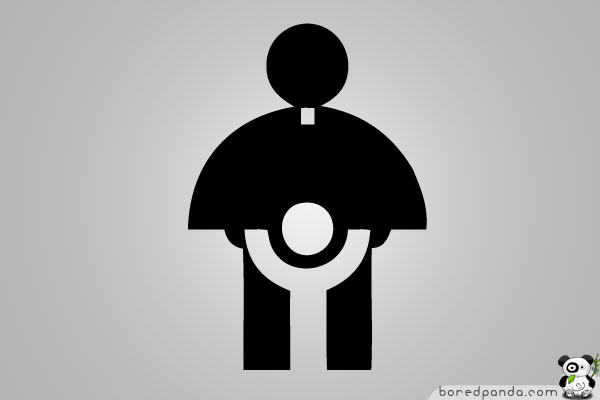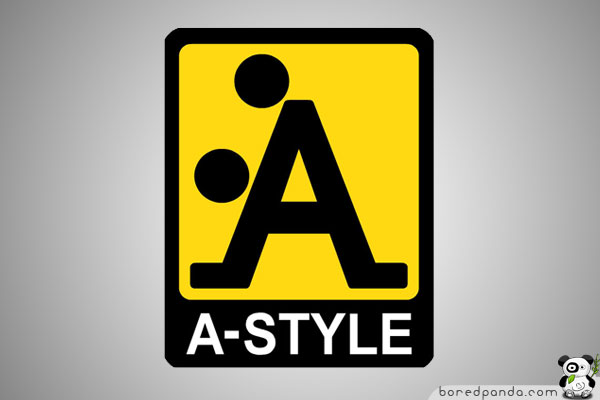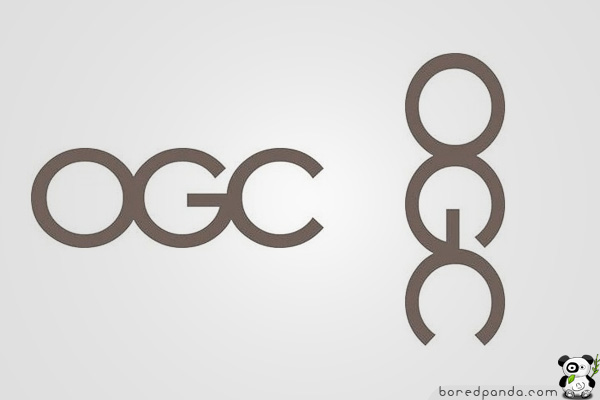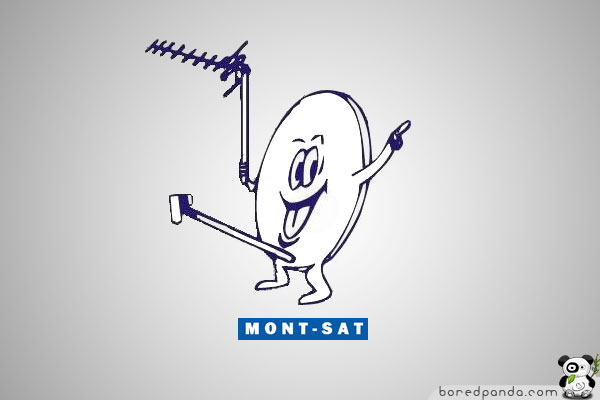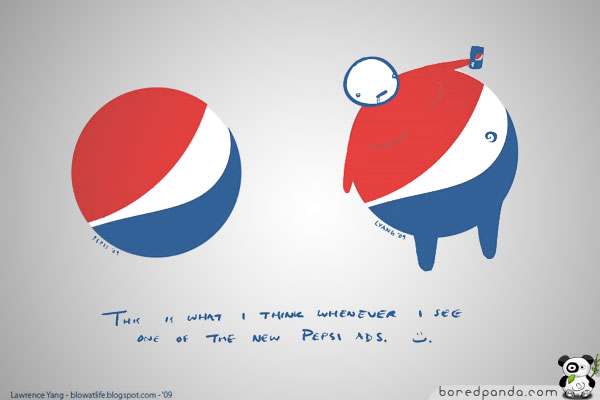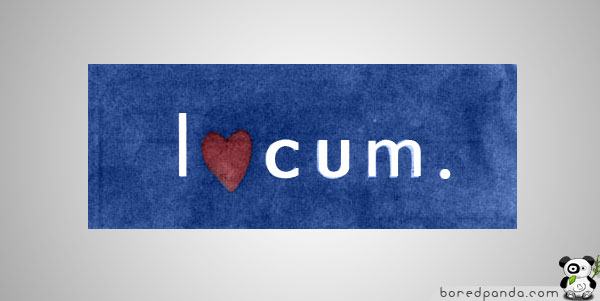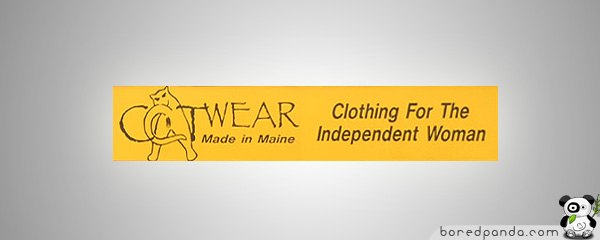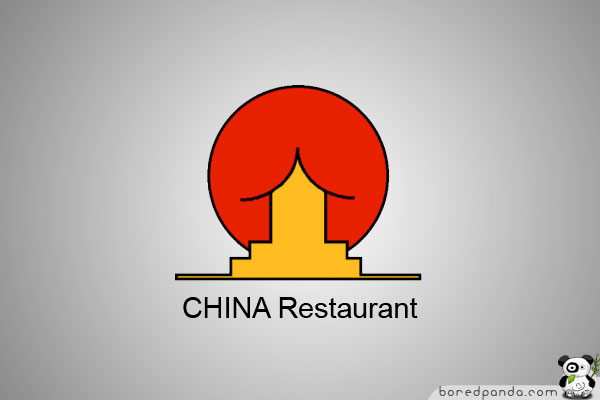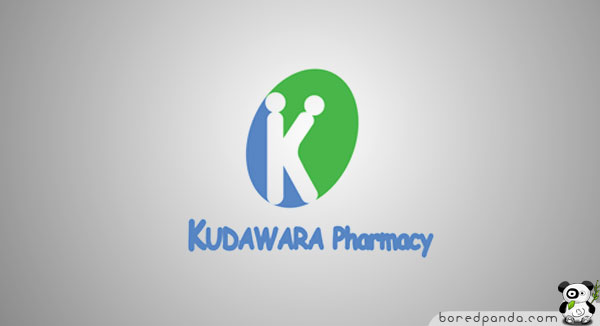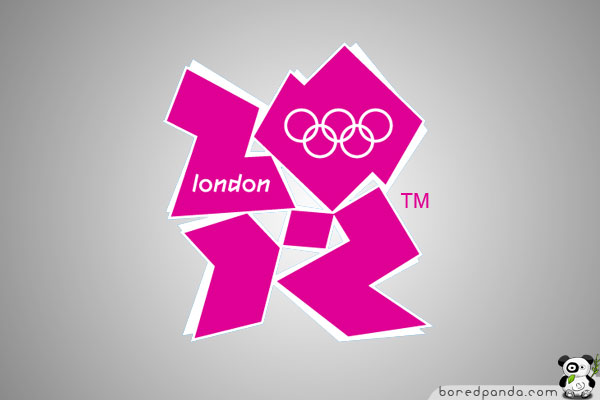Friday, July 30, 2010
Monday, July 26, 2010
Monday, July 12, 2010
Friday, June 18, 2010
Friday, June 11, 2010
Wednesday, June 9, 2010
Monday, June 7, 2010
MashableTV - live streaming video powered by Livestream
Sunday, June 6, 2010
Simon Sinek: How great leaders inspire action
An inspiring speech that everyone who believe's in their dreams should watch.
Steve Jobs' 2005 Stanford Commencement Address
Drawing from some of the most pivotal points in his life, Steve Jobs, chief executive officer and co-founder of Apple Computer and of Pixar Animation Studios, urged graduates to pursue their dreams and see the opportunities in life's setbacks -- including death itself -- at the university's 114th Commencement on June 12, 2005.
Saturday, June 5, 2010
Wednesday, June 2, 2010
Top 15 Worst Logo FAILS Ever
Logo of Catholic Church’s Archdiocesan Youth Commission
This is an actual logo designed in 1973 for the Catholic Church’s Archdiocesan Youth Commission. It even won an award from the Art Directors Club of Los Angeles.
A-Style Logo
A-Style logo was born well before the line of clothing – designed in 1989 and marketed in Italy since 1999. It was in fact an invention of his creator who began to attack Italian cities with stickers on a yellow background with A-Style logo (an example of guerilla marketing ), followed by other cities including Miami , Moscow and London. The newspapers and television began to be interested in the strange appearances of the logo, and soon the company started marketing their products under the brand A-Style.
Office of Government Commerce
The Office of Government Commerce (OGC) is an independent Office of the Treasury. Sometimes you need to shift your view to realize the error. www.ogc.gov.uk
Mont-Sat
Now you know why Mr. Satellite looks so happy. www.mont-sat.pl
Arlington Pediatric Center
Just checked their website, and apparently they have changed their logo to something more pleasing. It’s no longer a pedophilic center. Now it has something to do with crabs (look attentively at letter C). FAIL again or is it their marketing strategy? www.arlpedcen.org
Pepsi
While all this might look like a joke, it gets even funnier when you look at the Pepsi Max logo. It has nearly twice the caffeine of Pepsi’s other cola beverages. We’re not sure what drinking Pepsi Max is supposed to do for you, but based on what it did to this guys tummy here, we’d suggest staying away from it.
You’ll never look at the Pepsi logo the same again.
Clinica Dental
Computer Doctors
Locum
A logo for Locum, a Swedish property management company.
CatWear
China Restaurant
Kudawara Pharmacy
Kidsexchange
Junior Jazz Dance Classes
Olympic Logo of London 2012
Designed by Wolff Olins at an expenditure of £400,000 (almost $800,000) the logo has been met with expected ambivalence, and, in some unavoidable cases, hatred — actually, so far, in 11,550 cases.[1]
Monday, May 31, 2010
Brands engagement with games
"Basically game mechanics are a way to get consumers addicted to things," said Tim Chang, principal at Norwest Venture Partners, which has backed many social mobile game companies. "They keep people engaged to keep doing things, as opposed to what goes viral quick: You click, you watch and then never see it again."
Thursday, May 27, 2010
Monday, May 17, 2010
Underground Puzzle Leads to Dirty Picture -- And Daffy's Discount Prices
Friday, May 14, 2010
Your Ayes Tell Me Yes, Yes, But... The PR and Marketing Clash 05/13/2010
Key findings include the following:
· The lines between PR and marketing are blurring: Marketing and PR have formalized working relationships, but data suggests "formal" does not necessarily mean "functional." 78% of marketing and PR professionals say they report to the same boss, while 77% of the same group report formal working relationships to create a common communications strategy. However, 67% hold cross-functional meetings only "sometimes."
· Turf battles" are still evident: Despite formalized processes or structures, 34% cited "organizational structures, functional silos, or turf battles" as the single largest barrier to integrated communications. The next largest barrier is budget shortcomings with 20% of respondents.
· Ownership of social media and blogging is still undecided: PR and marketing each have a strong sense of ownership. 43% of PR professionals feel they should own social media, while 34% of marketers make the same claim. 37% of PR professionals think PR should own the corporate blog versus 23% of marketers expressing the same sentiment.
· Benefits and communication measurement provides common ground: 56% of marketing and PR professionals say integrated communications increases overall effectiveness of their outreach programs. 48% cite sales and ROI as the single most important factor in measuring the results of an integrated communications strategy.
Saturday, May 8, 2010
Chicago AMA Presents Cristina Benitez on Latinization
Cristina Benitez, Founder / President of Lazos Latinos, shares the direct opportunities around targeting the growing Hispanic population in the United States.
Friday, May 7, 2010
Geo-Marketing As A New Business Marketing Tool
Thursday, May 6, 2010
Digital Agencies Have Yet to Fully Adopt DOOH
Consumer Brand Loyalty Declines
Epic Commercials
25 epic commercials that aren't called '1984'






















Leo Burnett once said great advertising could be boiled down into three simple messages: "Here's what we've got. Here's what it will do for you. Here's how to get it." Maybe, but where's the fun in that? Sometimes it's best to just go big. Today, AdFreak celebrates the advertising pros who sacrificed simplicity and frugality on the altar of awesomeness to make something downright epic. Click here to get started.
—Posted by David Griner
Saturday, March 27, 2010
Britain's 100 Biggest Brands in U.K 2010
“The year was a tough one for the consumer and value for money became more important than ever before. What is apparent though is that shoppers have continued to buy trusted brands,” said Jake Shepherd, Marketing Director at Nielsen.
The 2009 sales value of the top 100 brands accounted for £16.7 billion (12.9%) of the total £130 billion grocery market, an increase of 4.5% YoY. The growth was ahead of total market growths which were 3.8% for the year.
Topping the table again this year is Coca Cola, which has become the first-ever grocery brand to pass the £1 billion mark in the U.K. The iconic brand was launched 110 years ago and continues to perform strongly growing 4.9% in 2009 to retain the top spot.
Other classic brands that have stood the test of time and feature in the top 10 of the league include bread brands Warburton’s (#2) and Hovis (#3). Warburton’s is 134 years old and the Bolton-based brand remains strong at number two. Hovis, whose branding hangs heavily on its heritage, enjoyed a very successful year with sales growing more than 13%, sits in fourth place. Cadbury’s Dairy Milk, another brand which has survived for more than a century, ranks fifth and Britvic’s Robinsons drink — which has a history that can be traced back to 1823 — retained its 10th place position.
The oldest surviving brand in the top 100 league is Twinings, which entered the Top 100 for the first time this year, 304 years after Thomas Twining began selling tea from his first premises on the Strand in London. Three centuries later, the brand grew sales 11% and was one of the five new entries to the top 100.
“The report sees some really exceptional performances from brands whose stories began up to three centuries ago but who continued to prevail in 2009. Nielsen has seen consumers become much more cautious and many have undertaken strategies to save money on the weekly shop, but Britain’s 100 Biggest Grocery Brands report highlights that quality, trusted brands can survive and indeed flourish in strong and tough times alike,” concluded Shepherd.
| Britain’s Top 25 Brands | |
|---|---|
| Rank | Brand |
| 1 | Coke |
| 2 | Warburtons |
| 3 | Walkers Crisps |
| 4 | Hovis |
| 5 | Cadbury Dairy Milk |
| 6 | Nescafe |
| 7 | Kingsmill |
| 8 | Andrex |
| 9 | Lucozade |
| 10 | Robinsons |
| 11 | Pepsi |
| 12 | McCains Chips & Potatoes |
| 13 | Tropicana |
| 14 | Whiskas Total |
| 15 | Muller Corner |
| 16 | Heinz Beanz |
| 17 | Lurpak |
| 18 | Danone Activia |
| 19 | Persil |
| 20 | Heinz Soup |
| 21 | Youngs Frozen Fish (Branded) |
| 22 | Pedigree Total |
| 23 | Flora |
| 24 | Felix Total |
| 25 | Cathedral City |
| Source: The Nielsen Company In this report, a brand is defined as any products sold under a brand name within a given category. The report covers grocery brands only and does not include personal care, OTC, alcohol or tobacco products. | |
The complete list of 100 brands is available at The Grocer.
